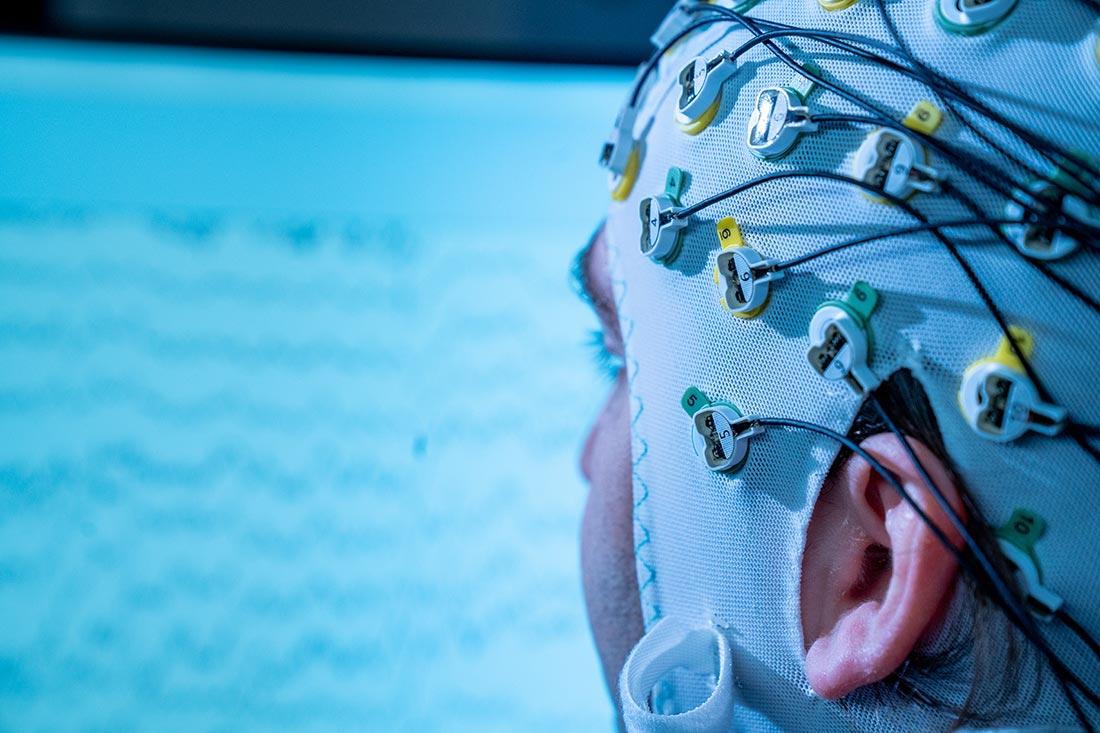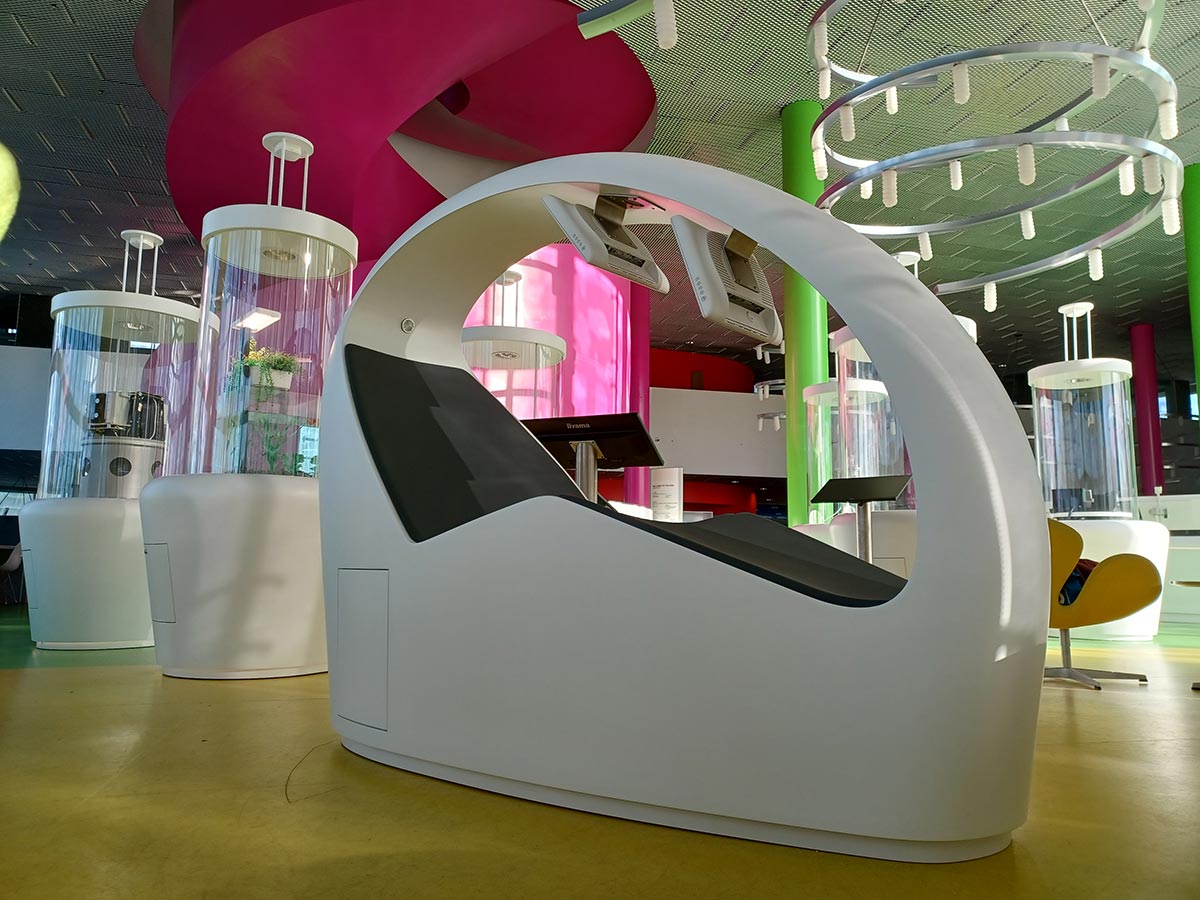Mind reading at Science Gallery!
How computers can read minds by measuring brain activity with the help of an EEG (electroencephalography) cap is demonstrated by Diana Gherman together with test person Tatiana Kholiavko on Wednesday, December 14, 12 p.m., in the Science Gallery, the showroom of BTU Cottbus-Senftenberg (in the foyer of the IKMZ).
The experiment, since recently part of the science gallery, is based on neuroadaptive technology that makes it possible to measure a person's mental workload in real time. For a computer to interpret a person's brain activity, it must first learn what that person's brain activity looks like. This is done during the calibration phase, where participants solve mathematical tasks. As participants perform these tasks, their brain activity is recorded with EEG electrodes and the computer gets a picture of brain activity representing both high and low workloads.
It is best when the workload is neither too high nor too low, so that people are neither overwhelmed nor bored. Neuroadaptive technology can detect how high a person's workload is based on measured brain activity. It can then adjust tasks, for example by making them easier or harder, to keep the workload at an appropriate level. In this way, people feel better and mistakes can be avoided.
Diana Gherman is a doctoral student and research associate at the Lichtenberg Professorship of Neuroadaptive Human-Technology Interaction, Faculty 1 MINT, BTU Cottbus-Senftenberg: "My dissertation is about the applicability of passive brain-computer interfaces. It will investigate how we can use neuroadaptive technologies to guide our decisions and improve human-computer interaction. It's fair to say that I'm also interested in contributing to the understanding of the societal implications and ethical issues that arise from rapid advances in artificial intelligence."
Respondent Tatiana Kholiavko is a PhD student (Department of Soil Conservation and Reclamation, Faculty 2 Environment and Natural Sciences) and a student assistant at Innovation Hub 13.
The group leader of the department, Prof. Dr. Thorsten O. Zander, is considered a pioneer in the field of passive brain-computer interfaces, which he defined in 2008. He is co-founder and co-director of the Society for Neuroadaptive Technology, which organizes conferences and other events to promote research and outreach activities on all aspects of neuroadaptive technology.
Info and registration at a glance:
Neuroadaptive Technology Live Experiment.
December 14, 2022, 12 p.m.
Duration of the presentation approx. 40 minutes
Max. 20 participants
Registrations (mentioning the number of participants) are open now and until Tuesday, December 13 by mail. Write to us at sciencegallery(at)innohub13.de.
Contact:
Tatiana Kholiavko
Department of Soil Protection and Recultivation
Tatiana.Kholiavko(at)b-tu.de
Date comment:
The presentation to a maximum of 20 participants will last about 40 minutes. The presentation is in English, with German translation.
Venue
Foyer
Inf.-,Komm.-u.Medien-Ztr.
(IKMZ)
Zentralcampus
Platz der Deutschen Einheit 2
03044 Cottbus
Science Gallery
VP Wissens- und Technologietransfer und Struktur
T +49 (0) 355 69-4698
roehrig(at)b-tu.de


